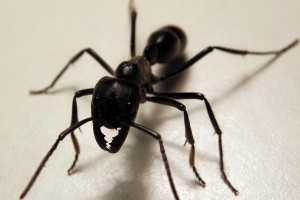Neanderthals were once portrayed as unintelligent, uncultured brutes, but that picture is beginning to change. They are increasingly being viewed now as intelligent, cooperative creatures who performed cultural rituals and traditions and who mourned their dead. A discovery published in PNAS this year indicates they may have even had art. Art is considered to be one of the highest expressions of complex, abstract thought, and for a long time it was believed to be uniquely human (uniquely Homo sapien, that is).
Researchers excavating a cave in Gibraltar found an engraving on the rock wall in undisturbed ground alongside Neanderthal tools. The engraving from Gorham’s cave, which looks suspiciously like a hashtag, was placed prominently on the wall suggesting it may have been a message to visitors or intruders. There is no direct evidence, however, that the design actually means anything, but it seems likely it was intended to be seen. Interestingly, the engraving appears at a junction in the cave, where the cave changes direction by 90 degrees. It’s hard not to speculate that the design might therefore be intended to share some spatial information, a “You are Here”, perhaps. Likewise, it may have signalled that the cave was occupied.
Continue reading →

